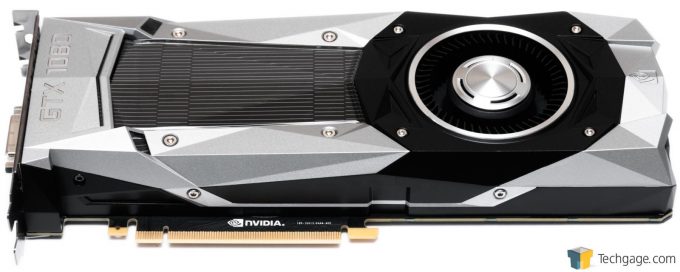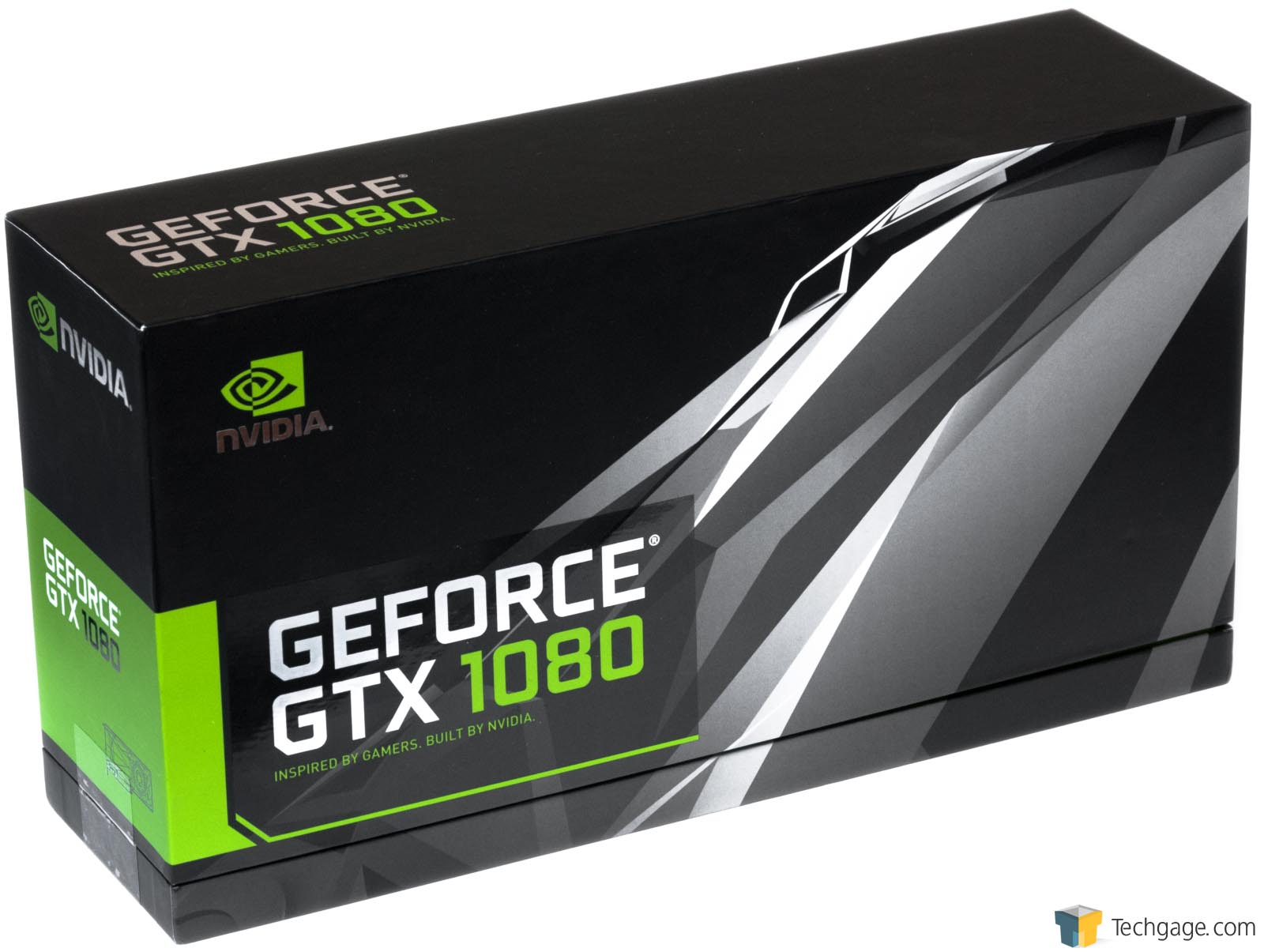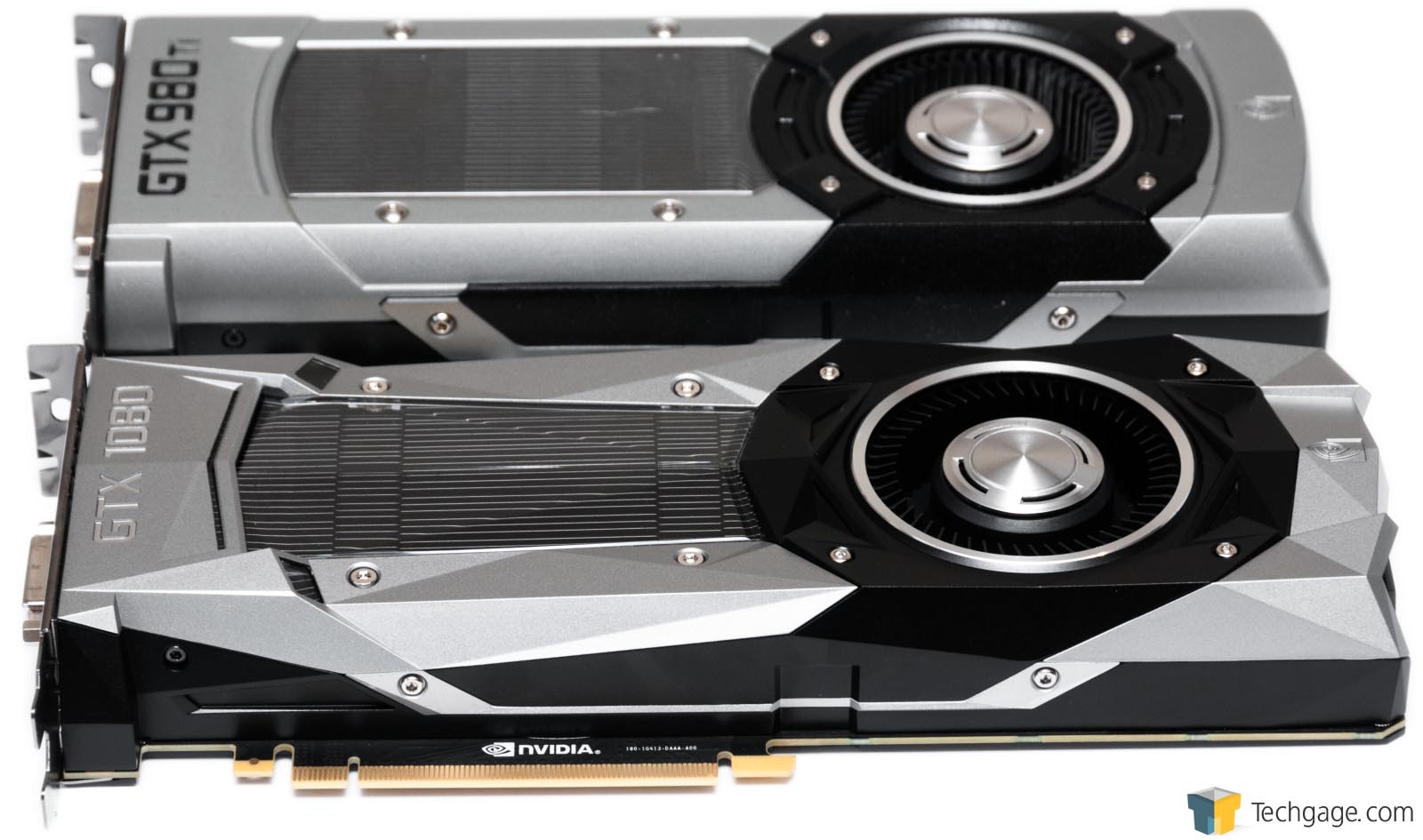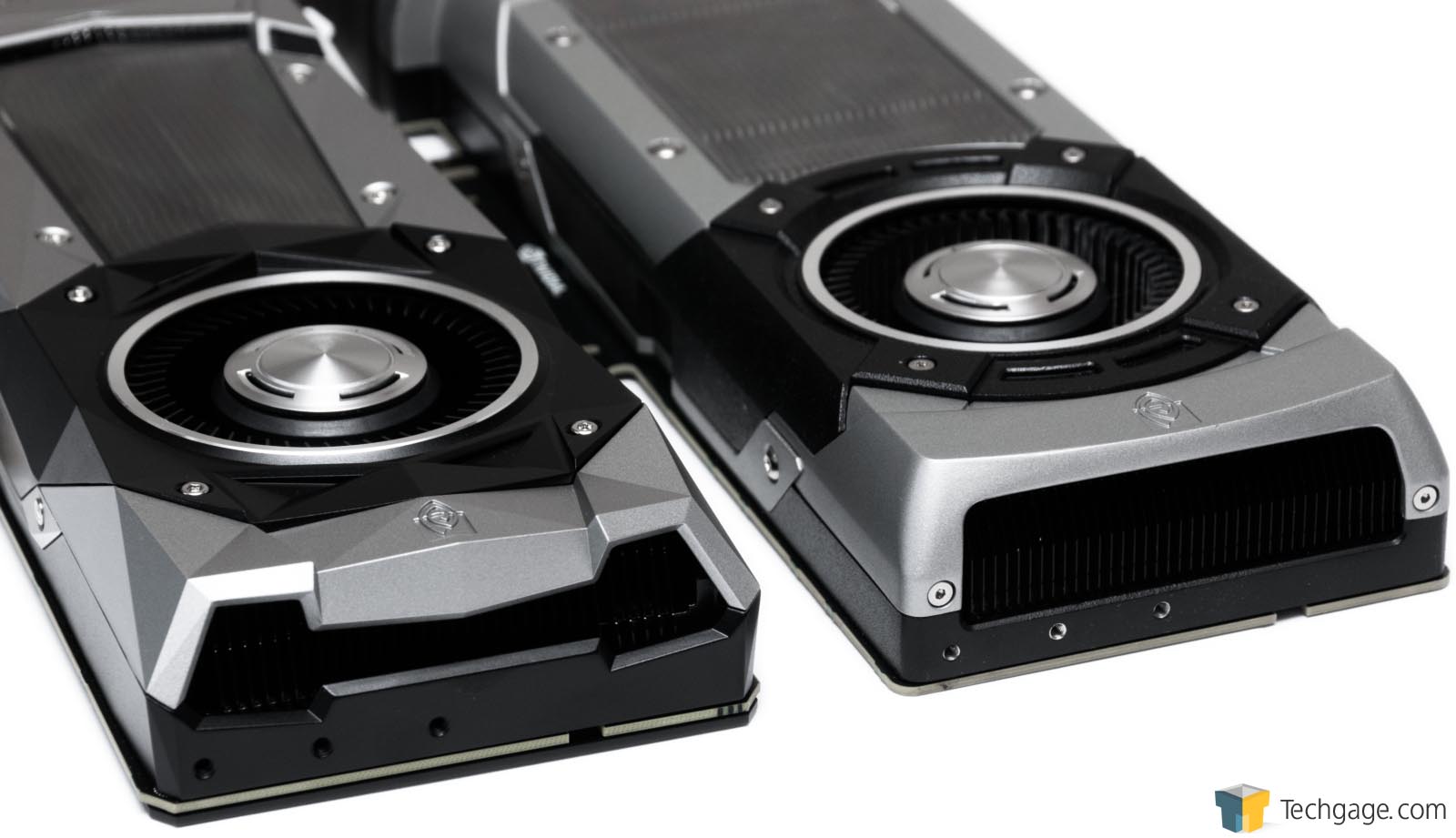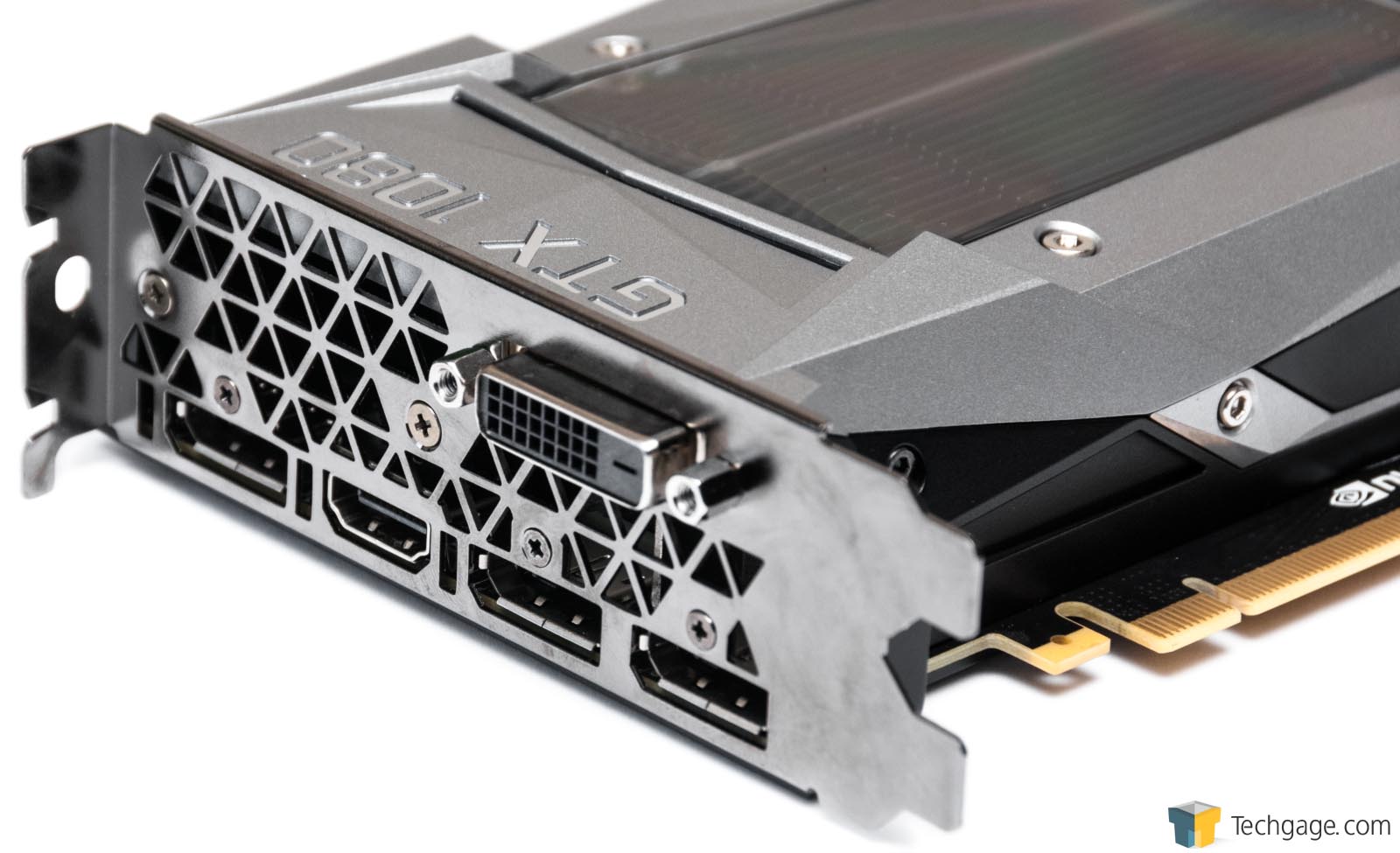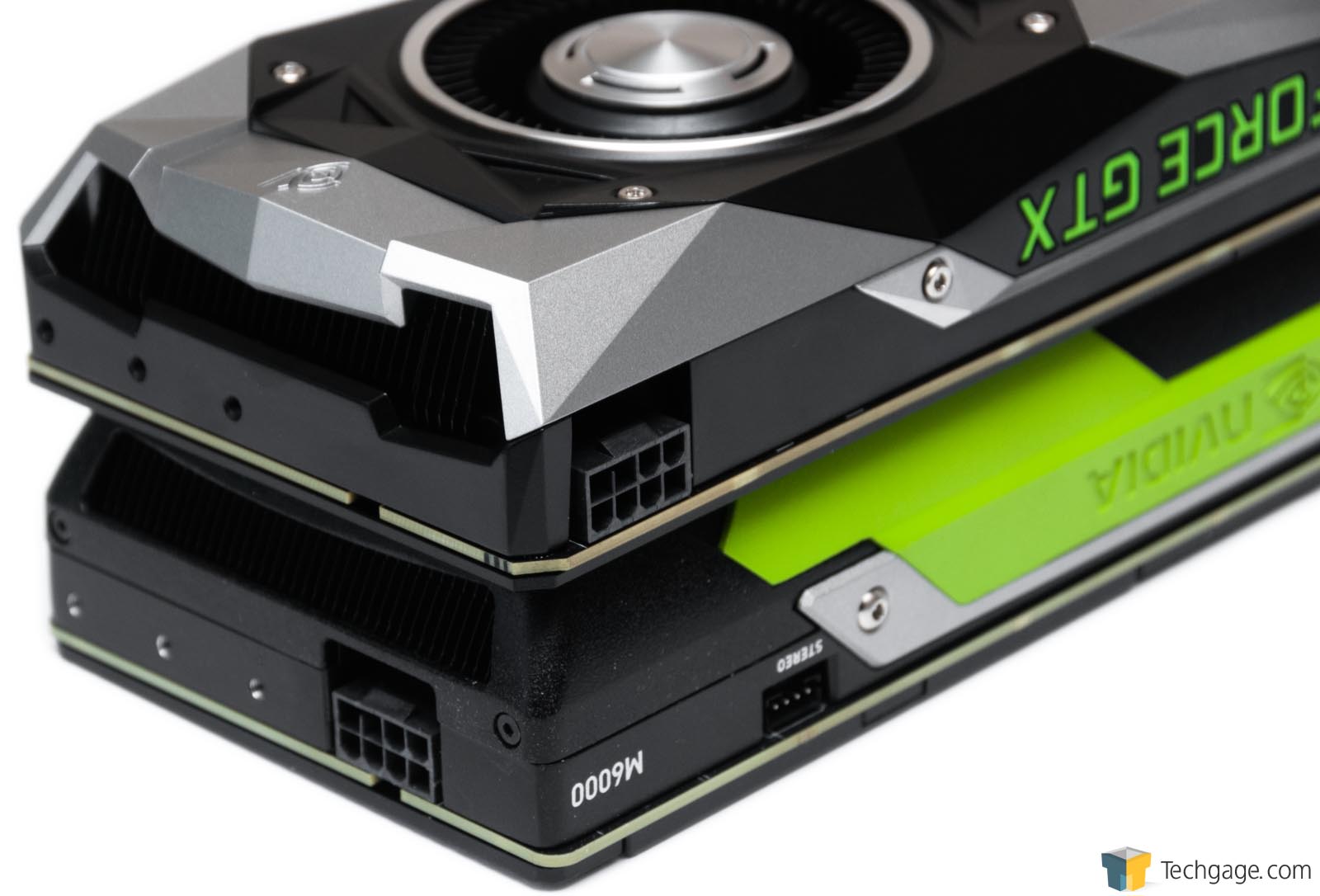- Qualcomm Launches Snapdragon 4 Gen 2 Mobile Platform
- AMD Launches Ryzen PRO 7000 Series Mobile & Desktop Platform
- Intel Launches Sleek Single-Slot Arc Pro A60 Workstation Graphics Card
- NVIDIA Announces Latest Ada Lovelace Additions: GeForce RTX 4060 Ti & RTX 4060
- Maxon Redshift With AMD Radeon GPU Rendering Support Now Available
NVIDIA GeForce GTX 1080 Review: A Look At 4K & Ultra-wide Gaming

NVIDIA’s Pascal architecture brings a lot of goodness to the table, and its GeForce GTX 1080 encapsulates it all. This card isn’t just faster than the TITAN X, it can sometimes even beat out SLI’d GTX 980s. There’s a lot more than just performance boosts with this card, though, so let’s dive in and tackle all of what makes it so great.
Page 1 – Introduction, About The GTX 1080 & Testing Notes
It’s been 20 months since NVIDIA launched its first Maxwell-based graphics card, the GeForce GTX 980, and 25 months since the company revealed the first important details of Pascal. Now? Well, it’s no secret: the first Pascal-based GeForce card is here, and it comes to us in the form of the GTX 1080.
I’m not going to reveal too much off the top, but I will say that if you’re one of those who’s been holding out for Pascal to arrive before upgrading or building a new rig, your patience is going to be well rewarded. Simply put, the GTX 1080 is a monster, and we have the test results to prove it.
Leading up to the launch of the GTX 1080, I put my neck on the line multiple times to state that NVIDIA couldn’t possibly stick with the 1080 naming. After all, the company knew that people were going to draw similarities to 1080p resolution. Defiant as always, the company simply doesn’t care about such small things, and that’s fair enough. But how awful does GTX 1180 sound? I can’t see this naming scheme going on beyond this generation, but I’ve been proven wrong by this one, so you’re better off trusting a Magic 8 Ball.
I think that the GTX 1080 name could have been pulled off years ago when 1080p was actually a de facto resolution. Today, 1080p really is child’s play.
Simply put: if you buy a GTX 1080 and only have a 1080p monitor, it better be because you’re in the planning stages of an upgrade, or else NVIDIA’s latest and greatest is going to go largely to waste. If there’s an exception, it’d be with those who prefer higher refresh rates over higher resolutions. How well the GTX 1080 performs in that particular use case, I’m not sure, but it’s something I’ll be investigating in the very near-future.
When it becomes available on May 27, NVIDIA’s GeForce GTX 1080 is going to retail for an SRP of $599 USD (but hard to get hold of), but don’t be surprised if that price is breached a little bit right off. The Founders Edition, which features NVIDIA’s own elaborate cooler, carries an SRP of $699 (currently, the only place to get them right now is Newegg, but this will change over the next couple weeks). If you don’t care about the cooler, then you’d be better off opting for one of the ~$599 models instead. The Founders Edition is squarely targeted at those who want a high level of craftsmanship in their PC. This cooler isn’t supposed to allow for greater overclocks over the older one – it’s just meant to look good.
The second Pascal card to launch will be the GTX 1070, which should hit retail on June 10th. Whereas the GTX 1080 is spec’d at 9 TFLOPs of single-precision performance, the GTX 1070 drops down to 6.5 TFLOPs. For a $379 offering (when available), that’s quite impressive – especially so when you consider the fact that the $1,000 TITAN X pushes 6.15 TFLOPs. Another way to look at it: that’s almost double the GTX 970’s 3.5 TFLOPs. The GTX 1070, like the 1080, will include a Founders Edition, which will retail for $449.
| NVIDIA GeForce Series | Cores | Core MHz | Memory | Mem MHz | Mem Bus | TDP |
| GeForce GTX 1080 | 2560 | 1607 | 8192MB | 10000 | 256-bit | 180W |
| GeForce GTX 1070 | ? | ? | ?MB | ? | ?-bit | ?W |
| GeForce GTX TITAN X | 3072 | 1000 | 12288MB | 7000 | 384-bit | 250W |
| GeForce GTX 980 Ti | 2816 | 1000 | 6144MB | 7000 | 384-bit | 250W |
| GeForce GTX 980 | 2048 | 1126 | 4096MB | 7000 | 256-bit | 165W |
| GeForce GTX 970 | 1664 | 1050 | 4096MB | 7000 | 256-bit | 145W |
| GeForce GTX 960 | 1024 | 1126 | 2048MB | 7010 | 128-bit | 120W |
| GeForce GTX 950 | 768 | 1024 | 2048MB | 6600 | 128-bit | 90W |
During his keynote in Austin earlier this month, NVIDIA’s CEO Jen-Hsun Huang said that the GTX 1080 is faster than a TITAN X for much less money than a TITAN X. That statement caused the crowd to get a little excited, but what pushed them over the top was when Huang followed-up by saying that even the GTX 1070 would beat the outgoing champ overall.
Pascal isn’t just faster, though: it’s more power efficient. Both the GTX TITAN X and 980 Ti were spec’d with a 250W TDP, but the 1080 shaves 70W off of that. Some of you might not care about power savings, but it’s notable nonetheless. It ultimately means that the GTX 1080 requires just 72% of the TITAN X’s from-the-wall power, but delivers a performance boost of at least 25% at the same time. Gains like these are not rare to new launches, but the fact that we’re still seeing them is what makes this so impressive.
As covered in a post last week, those who opt for the Founders Edition of the GTX 1080 will receive the card in the packaging seen above. The reference versions of the TITAN X and 980 Ti included the same kind of packaging, but NVIDIA opted to use more color this time around.
In some of the shots above, comparisons to the 980 Ti can be seen. Overall, the ‘reference’ coolers are quite similar, but the GTX 1080 looks more bad ass with its angular frame. I used quotes around ‘reference’ because reference for NVIDIA going forward is ‘Founders Edition’ – that naming is not a one-off.
There are a couple of other features to note, which might not be so obvious at quick glance. For starters, NVIDIA has equipped the GTX 1080 with a backplate which can help keep the card cool when it’s under stress. For those going the SLI route, a large portion of this backplate can be removed on the lower card for the sake of not blocking too much airflow. This would only matter if you were forced to sandwich both cards together; if you have ample airflow between them, the backplate can remain intact.
Another thing worth pointing out is the fact that the GTX 1080 includes just one 8-pin power connector, much like the TITAN X-derived Quadro M6000 does (even though the TITAN X required two connectors). Given the card’s 180W TDP, there should still be a ton of headroom for overclocking (you can read our GTX 1080 Overclock guide here), but because pro overclockers always want as much power available as possible, I’d wager that a fair few third-party variants of the card will reintroduce a second connector, either a 6- or 8-pin.
Testing Notes
I am going to be tackling some of Pascal’s biggest features on the next page, but for those who want to jump right into the performance results, I’ll take care of our testing methodology and system setup here.
When we need to build a test PC for performance testing, “no bottleneck” is the name of the game. While we admit that few of our readers are going to be equipped with an Intel 8-core processor clocked to 4GHz, we opt for it to make sure our GPU testing is as apples-to-apples as possible, with as little variation as possible. Ultimately, the only thing that matters here is the performance from the GPUs, so the more we can rule out a bottleneck, the better.
That all said, our test PC:
| Graphics Card Test System | |
| Processors | Intel Core i7-5960X (8-core) @ 4.0GHz |
| Motherboard | ASUS X99 DELUXE |
| Memory | Kingston HyperX Beast 32GB (4x8GB) – DDR4-2133 11-12-11 |
| Graphics | AMD Radeon R9 Nano 4GB – Catalyst 16.5.2 NVIDIA GeForce GTX 980 4GB x 2 – GeForce 365.10 NVIDIA GeForce GTX TITAN X 12GB – GeForce 365.10 NVIDIA GeForce GTX 1080 8GB – GeForce 368.14 |
| Audio | Onboard |
| Storage | Kingston SSDNow V310 1TB SSD |
| Power Supply | Cooler Master Silent Pro Hybrid 1300W |
| Chassis | Cooler Master Storm Trooper Full-Tower |
| Cooling | Thermaltake WATER3.0 Extreme Liquid Cooler |
| Displays | Acer Predator X34 34″ Ultra-wide Acer XB280HK 28″ 4K G-SYNC |
| Et cetera | Windows 10 Pro (10586) 64-bit |
Framerate information for all tests – with the exception of certain time demos and DirectX 12 tests – are recorded with the help of Fraps. For tests where Fraps use is not ideal, I use the game’s built-in test (the only option for DX12 titles right now). In the past, I’ve tweaked the Windows OS as much as possible to rule out test variations, but over time, such optimizations have proven pointless. As a result, the Windows 10 installation I use is about as stock as possible, with minor modifications to suit personal preferences.
In all, I use 9 different games for regular game testing, and 3 for DirectX 12 testing. That’s in addition to the use of three synthetic benchmarks. Because some games are sponsored, the list below helps oust potential bias in our testing.
(AMD) – Ashes of the Singularity (DirectX 12)
(AMD) – Battlefield 4
(AMD) – Crysis 3
(AMD) – Hitman (DirectX 12)
(NVIDIA) – Metro: Last Light Redux
(NVIDIA) – Rise Of The Tomb Raider (incl. DirectX 12)
(NVIDIA) – The Witcher 3: Wild Hunt
(NVIDIA) – Tom Clancy’s Rainbow Six Siege
(Neutral) – DOOM
(Neutral) – Grand Theft Auto V
(Neutral) – Total War: ATTILA
If you’re interested in benchmarking your own configuration to compare to our results, you can download this file (10MB) and make sure you’re using the exact same graphics settings. I’ll lightly explain how I benchmark each test before I get into each game’s performance results.
Because the GTX 1080 is so powerful, I’ve opted to ignore 1080p and 1440p testing for this article. Instead, given its target audience, I’ve stuck to two high-end resolutions: 4K and 3440×1440. The latter is definitely my favorite of the two, as it runs faster and exposes more of the game, but there’s no denying that 4K is a popular resolution (or is becoming one).
This review isn’t going to wrap-up Techgage‘s coverage of the GTX 1080; far from it. If you made a request for other resolutions to be tested, don’t fret, as more evaluations are en route. I might hold off until the GTX 1070 launches to work on certain articles, as its launch is not far off, but in any event, you can expect an in-depth look at GTX 1080 overclocking before then. Stay tuned. (Our GTX 1080 Overclock guide is now live)
From here, you can either learn more about Pascal by heading to the next page, or if you’ve not been living under a rock, you can jump to page three and fill up on some performance results.
Support our efforts! With ad revenue at an all-time low for written websites, we're relying more than ever on reader support to help us continue putting so much effort into this type of content. You can support us by becoming a Patron, or by using our Amazon shopping affiliate links listed through our articles. Thanks for your support!




